Actinic keratosis Images
Go to article Actinic keratosis
Keratosis actinica erythematous type: Large, blurred, red, rough plaque that is painful on contact with the fingernail.
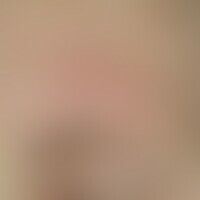
Keratosis actinica, lichenoid type, very discrete, solitary, located above the left eyebrow, 2.0 x 4.0 cm in size, blurred, slightly increased in consistency, painful with slight irritation, slightly reddened, rough plaque.

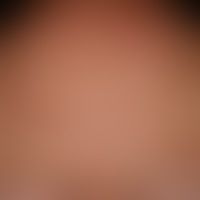
Keratosis actinica, keratotic type, extensive "field carcinoma" of the scalp, beginning to transform into an invasive, carcinoma of the skin.
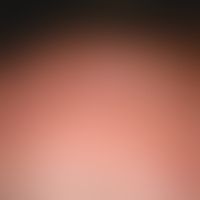
Keratosis actinica: Coexistence of white patches (flat scarring) and keratotic areas in the area of the hairless capillitium in an elderly patient
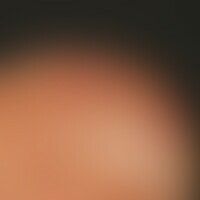
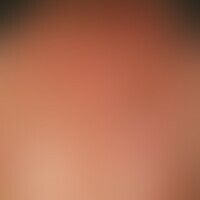
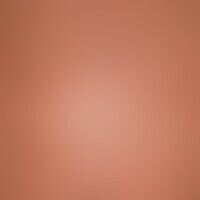
Keratosis actinica keratotic type:numerous, hyperkeratotic, in places also lichenoid, red papules and plaques on the capillitium of an 85-year-old man (former roofer); the papules and plaques are partly covered by adherent yellowish-brownish keratoses.
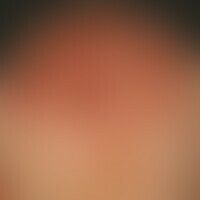
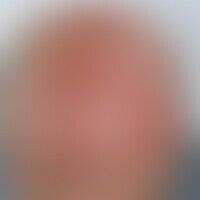
Keratosis actinica: Coexistence of erythematous and keratinized areas in the hairless capillitium of elderly patients.
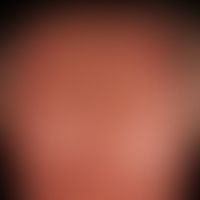
keratosis actinica. multiple inflammatory actinic keratoses, in places erosive or crusty covered. fair-skinned still "sun-tanned" - I cannot live without sun- leisure-active 74 year old patient.
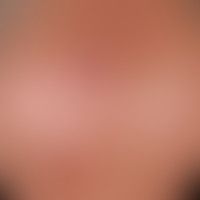
Keratosis actinica, keratotic type, extensive "field carcinoma" of the scalp, beginning transformation into an invasive, spinocellular carcinoma (see nodular formation at the lower left edge of the picture).
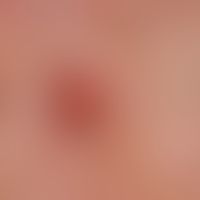
Keratosis actinica, keratotic type: extensive "field carcinization" of the scalp, beginning transformation into an invasive, spinocellular carcinoma (here detailed picture).
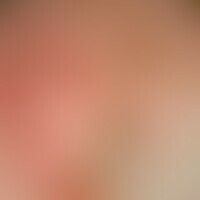
Keratosis actinica: 4.5 x 3 cm measuring, not sharply defined, erythematous, slightly infiltrated plaque with hyperkeratosis; further extensive hyperkeratosis with coarse, massive, fatty, yellowish-greyish scaly plaque.

Keratosis actinica of the cornu cutaneum type: circumscribed painless "skin horn" existing for months. no invasive growth. 83-year-old patient.
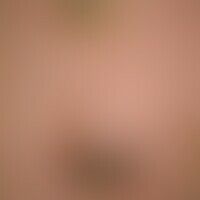
Keratosis actinica Cornu cutaneum Type: Circumscribed hyperkeratosis with coarse, massive, greasy, yellowish-grey scaly deposits on the forehead of an 81-year-old man.
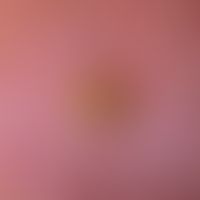
Keratosis actinica: clinical picture of the cornu cutaneum.
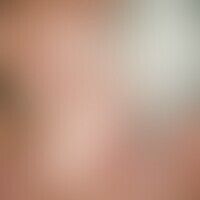
Keratosis actinica: Multiple, chronically stationary, disseminated, 0.2-0.6 cm in size, localized only in the face, blurred, moderately consistent, sensitive on firm palpation, brown also brown-red, rough, only flatly elevated papules and plaques in a 73-year-old man.
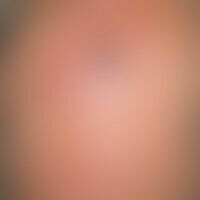
Actinic keratoses with keratoacanthoma-like squamous cell carcinoma. extensive"field carcinoma" of the scalp; development of a slowly growing, invasive, nodular squamous cell carcinoma (see nodular formation on the left side).
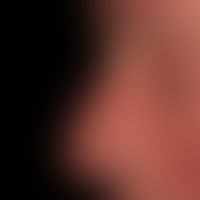
Keratosis actinica keratotic type: Extensive so-called field carcinoma with extensive infestation of the facial skin. Besides undefined, red, rough, barely scaly plaques, there are circumscribed hyperkeratotic plaques with firmly adhering, spiny scale deposits. The mechanical detachment of the scales is painful and leads to local bleeding.
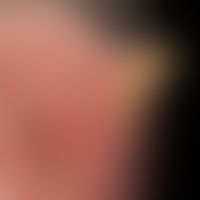
Keratosis actinica: actinic keratosis with transition to an invasive squamous cell carcinoma under the clinical picture of the cornu cutaneum
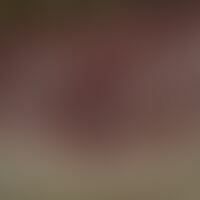


keratosis actinica. general view: since 8 years persistent, slightly progressive, extensive hyperkeratosis with coarse, massive, greasy, yellowish-greyish scaly plaque on the face of an 81-year-old man. on the left forehead a 4.5 x 3 cm large, not sharply defined, erythematous, slightly infiltrated plaque with hyperkeratosis is visible. on the left zygomatic arch a morphologically similar, but more infiltrated and crusty lesion of about 3 x 3 cm size with putrid parts is visible. preauricularly on the left side an ulcer of 3.5 x 2 cm is visible which has developed after a recent excision of a tumor located there.
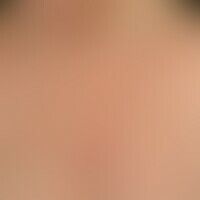
Keratosis actinica lichenoid type: For years, progressive, partly small, red, slightly scaly, rough, partly bloody and crusty covered papules and plaques in an 80-year-old patient with skin type I.
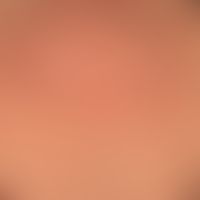
Field carcinogenesis: hyperpigmented skin with multiple actinic keratoses; larger scar after excision of a flat epithelial carcinoma.
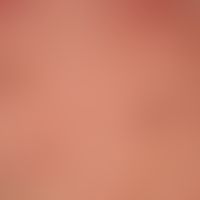
Field carcinoma: hyperpigmented skin with multiple actinic keratoses; larger scar after excision of a flat epithelial carcinoma (detailed picture).
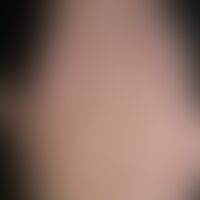

Keratosis actinica erythematous type: Chronic light damage to the back of the hand with multiple little scaly red spots, papules and plaques in a patient with skin type I. A 4 mm hyperkeratotic actinic keratosis with adherent, verrucous horn support is visible above the base of the index finger.
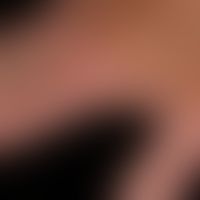
Keratosis actinica (predominantly) lichenoid type: Flat, sharply defined red patches and flat (hardly infiltrated) plaques, predominantly only with discrete scaling, only in places strengthening the scaly deposits.
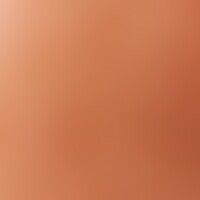
Keratosis actinica. reflected light microscopy: pigmented actinic keratosis (cheek region, interfollicular aggregated, grey to grey-black, granular structures melanophages and keratinocytic pigments).
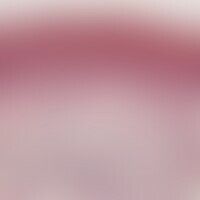
Keratosis actinica, atrophic type: parakeratosis, atrophic epithelium of the roof, loss of basal nuclear polarity, low to moderate cell and nuclear polymorphism of the keratinocytes.

Keratosis actinica. hypertrophic type: compact parahyperkeratosis, acanthotic widening of the epidermis by finger-shaped or also clumsy proliferation of atypical keratinocytes. especially in the central parts of the picture the retelephins show a clear polymorphism of the keratinocytes. loose dermal lympho-histiocytic infiltrate.

keratosis actinica. detail enlargement. hypertrophic actinic keratosis. suspension of the epidermal architecture up to the middle third (analogous KIN II) by proliferation of atypical keratinocytes. KIN = keratinocytic intraepithelial neoplasia.

Keratosis actinica. lichenoid type: irregularly configured surface epithelium with equally irregular surface keratinization. dense, band-shaped, lymphocytic infiltrate in the upper dermis.


keratosis actinica: hyperplastic actinic keratosis with acantholyses. Suprabasal dehiscence of the intercellular bridges, individual dyskeratoses with nuclear pycnoses. Sebaceous glands and lymphocytic inflammatory infiltrates are visible in the dermis.
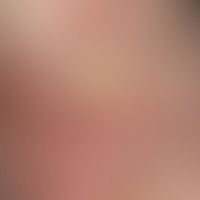
Hyperplastic actinic keratosis, reflected light microscopy
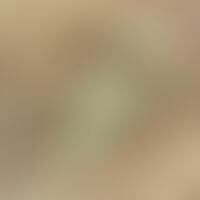
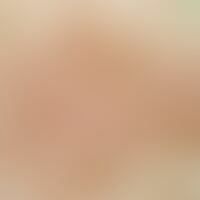
Bowenoid actinic keratosis: reflected light microscopy
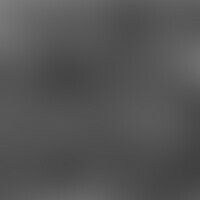

Bowenoid actinic keratosis: laser scanning microscopy , epidermis, irregular honeycomb pattern

Bowenoid actinic keratosis: laser scanning microscopy, junctional zone, reticular, significantly widened reticular ridges